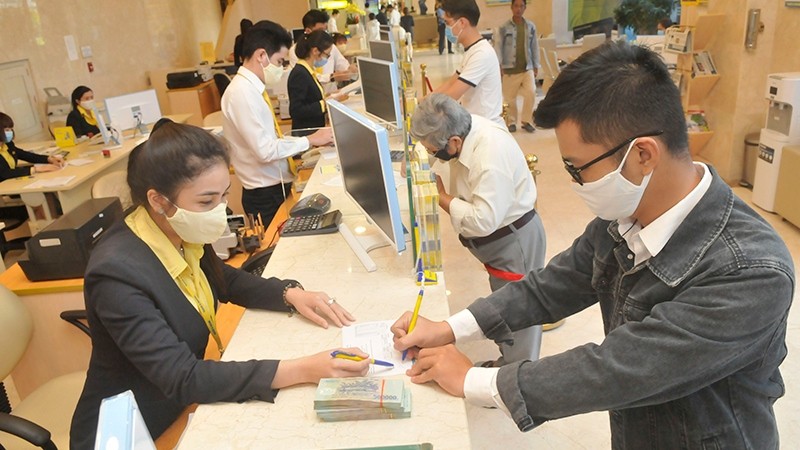For years, Ho Chi Minh City has served its role as Vietnam’s economic and financial centre, contributing 23% of the nation’s GDP and 27% of government income, and accounting for one-third of total foreign direct investment (FDI) projects as well as a significant share of indirect investment through mergers and acquisitions, venture funds and remittances.
The city’s labour productivity is estimated at 293 million VND (12,600 USD) per year, 2.7 times higher than the national average, while the city boasts an advantage in high-quality human resources in the financial sector and financial support services such as accounting, auditing, arbitration and legal affairs.
According to Dr Tran Du Lich, a member of the National Financial and Monetary Policy Advisory Council, Ho Chi Minh City is not only a national financial centre but also holds a relatively high position in Southeast Asia’s financial market. In monetary terms, the city contributes 28% of short-term transactions but accounts for 95% of Vietnam’s capital market.
Ho Chi Minh City is located at an international crossroads for marine routes from north to south and east to west, it is the centre of Southeast Asia and has a time zone different from those of the world’s 21 largest financial centres. This allows Ho Chi Minh City to join the programme to cover global financial transactions 24 hours a day. It is the city’s advantage to attract idle capital during the closing hours of such centres. Ho Chi Minh City is also the only city in Vietnam to have a high score of 561 on the Global Financial Centres Index (GFCI).
Under the draft plan, the international financial centre in Ho Chi Minh City will be composed of three components: the monetary market and the banking system, the capital market and the commodity derivatives market. The plan will be implemented in three stages. During the first stage from now until 2025, Ho Chi Minh City will take action to reinforce its position as Vietnam’s national financial centre, increase its GFCI rankings and form a financial complex in Thu Thiem.
From 2026 to 2030, the city aims to solidify its position as a high-ranking financial centre in Asia while the Thu Thiem Financial Complex will become a financial sector cluster on fintech aligned with the banking system, and asset investment management services aligned with the capital market and the commodity derivatives market.
After 2031, Ho Chi Minh City will grow into a global financial centre. The financial integration roadmap will be continued based on liberalising the Vietnamese dong and liberalising the capital account. The financial district of Thu Thiem will be developed to become a standard in terms of banking and fintech within the global capital market and commodity derivatives market.
Under the plan, the international financial centre in Ho Chi Minh City is oriented to be closely connected with the city’s urban development, linking financial activities in the existing urban zones (District 1 and District 3) with the Thu Thiem new urban area. The development of the financial centre is not confined to the geographical space but should adopt the soft space approach, in which the cores are the monetary market, the capital market and the commodity derivatives market, financial institutions as well as direct and indirect supportive products and services. According to Ho Chi Minh City Vice Chairwoman Phan Thi Thang, the selection of a site to build and form a financial centre in Ho Chi Minh City is a necessary condition to formulate specific breakthrough policies so that it can compete regionally and internationally.
To realise the strategic vision of becoming an international financial centre, Ho Chi Minh City still needs to deal with many challenges in forming and operating the international financial centre effectively. They are outlining the appropriate model and orientation; formulating policies, mechanisms, legal framework, infrastructure, technological and manpower foundations; determining breakthrough policies to attract major investors and financial corporations to the international financial centre in Vietnam.
According to IPPG Chairman Johnathan Hanh Nguyen, there are many big companies in international finance willing to invest in Ho Chi Minh City. But to attract trustworthy strategic investors, it is necessary to introduce breakthrough preferential policies that are superior to the current legal framework. The government should soon establish a steering committee on formulating the international financial centre plan to accelerate the completion of procedures and the implementation of projects. He noted that as countries in Southeast Asia all wish to develop international financial centres, Vietnam should quickly seize the opportunity to expedite the plan to build an international financial centre in Ho Chi Minh City.
Dr Tran Du Lich shared that the goal of developing Ho Chi Minh City into a regional and global financial centre is a relatively long process. Although the international centre is situated in Ho Chi Minh City, it depends greatly on national financial and monetary policies and other issues that need an accompanying roadmap, which the city cannot do alone. Developing an international financial centre is a national issue, not just Ho Chi Minh City’s matter. He suggested continuing to create the conditions to form a regional economic and financial centre; developing good infrastructure to attract international investors, and building and attracting high-quality human resources to meet the new development requirements.
















